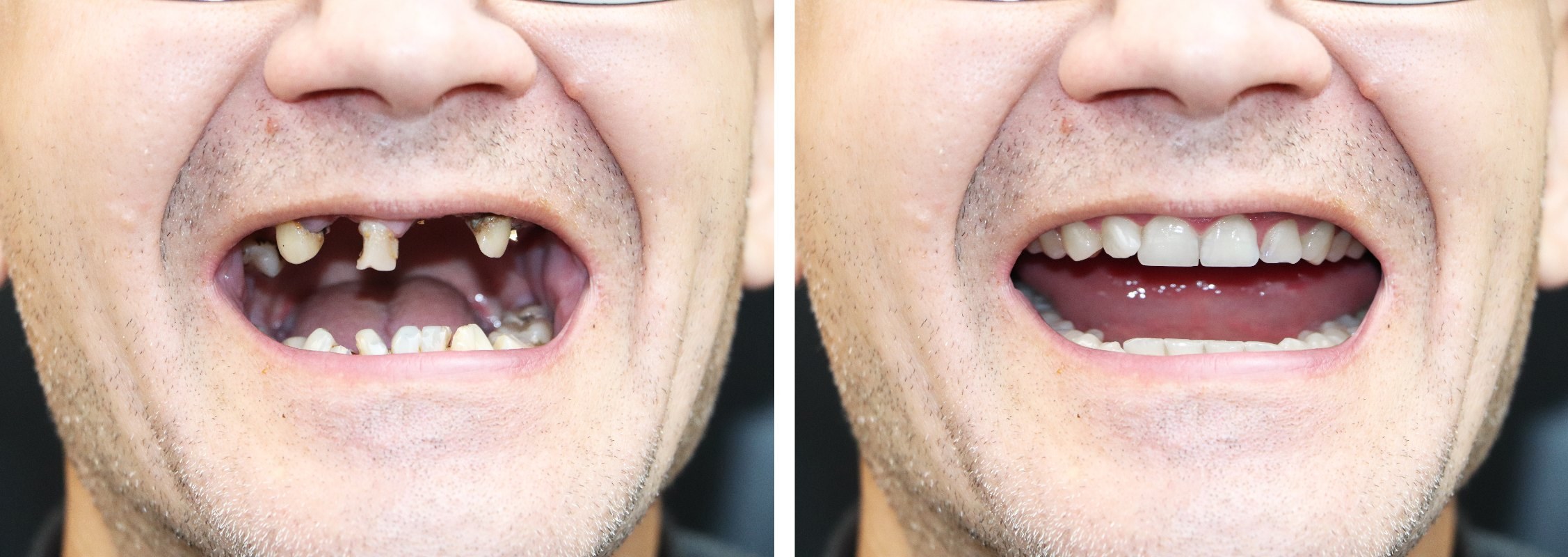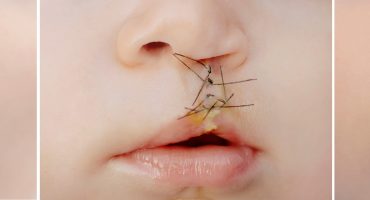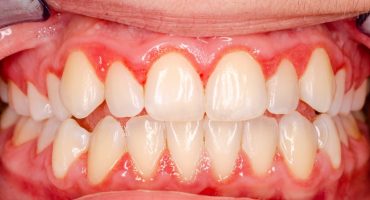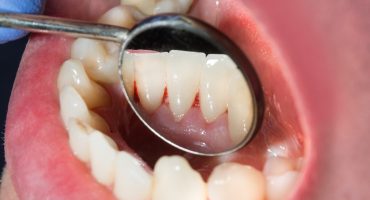The number of teeth in adulthood comprises a total of 32 teeth, a reduction of this number is called tooth loss. Missing teeth in children, which are based on the natural loss of the deciduous teeth, thus does not include the term, this is an age-typical change of teeth.
Definition tooth loss
Dentistry uses various options tooth gaps to classify. The Common classification by Kennedy Provides Four classes before, in which the position of the tooth gaps is critical:
- Kennedy class I: Left shortened row of teeth or both sides
- Kennedy Class II: single-sided truncated teeth
- Kennedy Class III: lateral shifting gap
- Kennedy Class IV: frontal gap
What causes cause tooth loss?
In all classes of caries and periodontal disease are the main causes of tooth loss. Accidents, on the other hand, have a significantly lower significance. In principle, the regular prophylaxis at the dentist and regular home-based dental care offer good protection against these diseases. But what is caries and periodontal disease exactly?
Caries
Caries affects the enamel and / or dentin. Several factors work together here. On the one hand the condition of the teeth plays a role, more precisely the mineral quality. On the other hand, promotes diet rich in sugar and carbohydrates the development of tooth decay. Furthermore, plaque, and a coating on the teeth, affects the dental disease. In order to effectively prevent tooth decay, not only daily oral hygiene is advised, but also a professional tooth cleaning at the dentist, which removes the deposits thoroughly.
In general, tooth decay can be divided into different stages. The disease often begins with a decalcification of the enamel, which is associated with a white discoloration. This is a preliminary stage, which regresses with good dental care. In addition, fluoridation provides useful services to help re-mineralize the affected tooth. If there is a yellow or brown discoloration on the enamel, caries has already broken through the enamel, which is also commonly referred to as a hole in the tooth. A treatment is now inevitable. The dentist removes the damaged tooth hard substance and replaces it with a filling made of plastic, amalgam or cement. If caries remains untreated, the destruction of the tooth substance continues unhindered, so that tooth loss ultimately occurs.
Periodontitis
Periodontitis, also known as parodontosis, is chronic inflammation of the gums that promotes bone resorption. The teeth lose their grip and loosen up. Gingivitis is usually associated with these symptoms:
- swelling or redness of the gums
- Bleeding from the
- gums
- Gingival halitosis Halitosis
These symptoms are caused by bacteria that nests and spreads in the periodontal pockets. However, targeted dental treatment can effectively treat periodontal disease. The therapies differ according to the severity of the disease. In a mild form, a thorough, periodic, professional cleaning of the teeth is often sufficient to reduce the inflammation. However, an advanced stage requires further measures, in which the dentist adjusts the necessary treatment steps to the individual oral situation of the patient. In order to achieve a long-lasting treatment success, it is also recommended to have a thorough dental follow-up care, which serves the prophylaxis.
Consequences of tooth loss
Regardless of which cause is underlying a tooth loss, this results in significant consequences. Missing teeth cause the remaining ones to do more and now have to do all the chewing. As a result, in most cases, the remaining teeth become overloaded and overloaded, so that their dental health is endangered in the long term. In addition, a bone degradation sets in. In the long term, it comes to the dreaded domino effect and one tooth after another is lost. Tooth gaps also help to change the natural facial expressions. For example, sufferers often tend to avoid a big smile. However, adequate treatment reliably counteracts potential consequences.
Treatment
Tooth Loss Naturally, the preservation of teeth is a top priority, but when it is no longer possible to rescue a tooth, provides modern dentistry numerous solutions, such as crowns, bridges or implants. Tooth loss does not necessarily lead to health or aesthetic restrictions.
Crowns and bridges
Thanks to the new high-tech all-ceramic (zirconium oxide), crowns are practically indistinguishable from natural teeth. Fixed bridges represent individual teeth, because the bridge elements replace the missing tooth, whereby the neighboring teeth that are still present fulfill the function of a supporting pillar. All-ceramic bridges are just as well tolerated by the body as ceramic veneered variants.
Combined dentures and full dentures
The combined denture is tight and provides a secure grip, but can be removed for cleaning. Several missing teeth in different areas can be replaced with it. If it comes to the loss of all teeth, remains as a solution - in addition to implants - only the full denture. It sucks by negative pressure on the mucous membrane, whereby it finds support in the jaw. For a perfect fit of the prosthesis, it is important to adapt and shape its edge accordingly by means of an exact functional impression.
Implantology
The use of implantology in dentistry goes back more than four decades. Since then, development has been steadily progressing, so today's innovations provide excellent treatment options to provide patients with an adequate solution. Anyone who has lost individual teeth or even rows of teeth due to an accident, a disease or due to the natural aging process experiences this at the same time as a loss of quality of life, but this need not be. Modern implant solutions mean dental prostheses at the highest level that are functional and aesthetically pleasing.
What is an implant?
A crown always needs a root that ensures grip. An implant takes on the role of the missing tooth root. It consists of titanium or ceramic (zirconium oxide). The Implantation in the jawbone takes place under local anesthesia, on request also in general anesthesia. The implant grows and remains there permanently. Crowns and also bridges or prostheses can then be attached to this artificial tooth root. Implants act as small support pillars, forming the stable foundation for future prosthetics.




